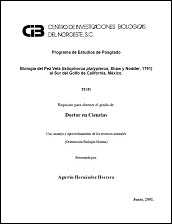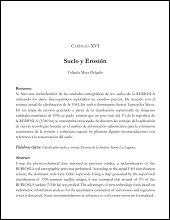Capacidad depredadora del langostino Macrobrachium tenellum sobre larvas de Aedes aegypti en condiciones de laboratorio
Predatory capacity of Macrobrachium tenellum on Aedes aegypti larvae in lab conditions
Autor
MANUEL ALEJANDRO VARGAS CEBALLOS
LUIS EDUARDO RUIZ GONZALEZ
LUIS DANIEL ESPINOSA CHAURAND
HECTOR GERARDO NOLASCO SORIA
FERNANDO VEGA VILLASANTE
Metadatos
Mostrar el registro completo del ítemResumen
"Introducción: en los últimos años se le ha dado gran importancia a los depredadores naturales de Aedes aegypti. Se han investigado, tanto en el campo como en el laboratorio, los distintos organismos con capacidad de devorar larvas de este mosquito. Macrobrachium tenellum se encuentra en altas densidades en condiciones naturales, no es agresivo y puede tolerar un amplio y fluctuante intervalo de temperaturas, salinidades y concentraciones de oxígeno. Objetivo: evaluar la capacidad depredadora de Macrobrachium tenellum sobre larvas de Aedes aegypti en condiciones de laboratorio. Métodos: se utilizaron juveniles de Macrobrachium tenellum con dos rangos de tallas: A (3,0 cm-3,5 cm) y B (4,5 cm-5,0 cm). Las larvas del mosquito se obtuvieron de la eclosión de huevos producidos por hembras adultas mantenidas en una jaula entomológica. En el primer bioensayo se colocaron 5, 10, 15 y 20 larvas de Aedes aegypti por tratamiento por rango. En el segundo bioensayo el número de larvas se ajustó a 30, 40, 50 y 80 larvas por tratamiento por rango. Resultados: Macrobrachium tenellum demostró un alto consumo de larvas para los dos rangos y tratamientos. En la mayor densidad (80 larvas) se obtuvo el consumo de 95 % de larvas a las 24 h para el rango A y 100 % para el rango B. Conclusión: Macrobrachium tenellum puede ser considerado como un potencial agente de control biológico debido a su abundancia en ambientes naturales, su resistencia a diversas condiciones ambientales y a la voracidad presentada en este estudio." "Introduction: in the last few years, a lot of importance has been given to natural predators against Aedes aegypti. Several organisms have been studied both in lab and in the field so as to find out their capacity to devour mosquito larvae. High densities of Macrobrachium tenellum are found in natural conditions, it is not aggressive and may stand wide ranges of temperature, rates of salinity and oxygen concentrations. Objective: to evaluate the predatory capacity of Macrobrachium tenellum on Aedes aegypti larvae in lab conditions. Methods: very young Macrobrachium tenellum prawns measuring A(3.0-3.5cm) and B(4.5-5 cm) were used. The mosquito larvae were obtained after hatching of egss from adult females kept in entomological cages. Five, ten, fifteen and twenty Aedes aegypti larvae were placed per treatment per rank, whereas the second bioassays adjusted the number of larvae to 30, 40, 50 and 80 larvae per treatment per rank. Results: Macrobrachium tenellum showed high rate of larval consumption for the two ranks and treatments. In the highest density (80 larvae), the consumption was 95% of larvae at 24 hours for rank A and 100% for rank B. Conclusions: Macrobrachium tenellum may be considered as a potential biological control agent, due to its abundant presence in natural conditions, its resistance to different environmental conditions and to its voraciousness seen in this study."
Colecciones
Ítems relacionados
Mostrando ítems relacionados por Título, autor o materia.
-
PROMOCIÓN DEL PERIFITON PARA EL CULTIVO DE CAMARÓN BLANCO: HACIA UNA ACUICULTURA ECOLÓGICA
DOMENICO VOLTOLINA LOBINA; JUAN MANUEL AUDELO NARANJO; MARIA DEL ROSARIO PACHECO MARGES -
Suelo y Erosión
YOLANDA LOURDES MAYA DELGADO


